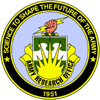|
Meeting Purpose
|
|
| |
The fusion of basic ideas in mathematics, radar, sonar, biology, and
chemistry with ongoing improvements in hardware and computation offers
the promise of much more sophisticated and accurate detection and
identification capabilities than currently exist. Coupled with the
dramatic rise in the need for surveillance in innumerable aspects of our
daily lives, brought about by hostile acts deemed unimaginable only a few
short years ago, the time is ripe for image processing scientists in
these usually diverse fields to join together in a concerted effort to
combat the new brands of terrorism. We envisage the proposed ASI as one
important step.
|
|
| |
To encompass the diverse nature of the subject and the varied backgrounds
of the anticipated participants, the ASI will be divided into three
broadly defined but interrelated areas:
|
|
| |
I. The mathematics and computer science of automatic detection and
identification;
|
|
| |
II. Image processing techniques for radar and sonar;
|
|
| |
III. Detection of anomalies in biomedical and chemical images.
|
|
| |
A deep understanding of these three topics, and of their
interdependencies, is clearly crucial to meet the increasing
sophistication of those who wish to do us harm. The list of fully
committed principal speakers includes many of the world's leading experts
in the development of new imaging methodologies to detect, identify, and
prevent or respond to these threats.
|
|
| |
The ASI will bring together world leaders from academia, Government and
industry, with extensive multidisciplinary backgrounds evidenced by their
research and participation in numerous workshops and conferences. This
will create an interactive forum for initiating new and intensifying
existing efforts aimed at creating the required interdisciplinary
approach to the analysis of images of all types for the purpose of
detecting and identifying threats. The forum will provide opportunities
for young scientists and engineers to learn more about these problem
areas, and the vital role played by new mathematical and scientific
insights, from the recognized experts in this crucial and growing area
of both pure and applied science. An ancillary benefit will be the
advancement of detection and identification capabilities for natural
threats such as disease, natural disasters, and environmental change.
|
|
| |
The directors will ensure that the talks are designed to address an
audience consisting of a broad spectrum of scientists, engineers,
and mathematicians involved in these fields. Participants will have
the opportunity to interact with those individuals who have been on
the forefront of the ongoing explosion of work in automatic detection
and identification, to learn firsthand the details and subtleties of
this important and exciting area, and to hear these experts discuss in
accessible terms their contributions and ideas for future research.
Furthermore, the team-authored textbook to be written by the lecturers
will offer these insights to those unable to attend.
|
|
|
Acknowledgements
|
|
| |
We wish to thank the following for their contribution to the
success of this conference, and we note that United States Government support does not necessarily reflect the position or the policy of the United States Government and no official endorsement should be inferred: |
|
| |
 |
NATO Scientific & Environmental Affairs Division |
|
|
| |
 |
Office of Naval Research Global |
|
|
| |
 |
U. S. Army Research Office |
|
|
| |
 |
European Office of Aerospace Research and Development
of the USAF |
|
|
| |
 |
Air Force Office of Scientific Research |
|
|
| |
 |
United States Air Force Research Laboratory |
|
|
| |
|
United States Defense Advanced Research Projects Agency Special Projects Office |
|
|
.
| |
 |
Prometheus Inc. |
|
|

